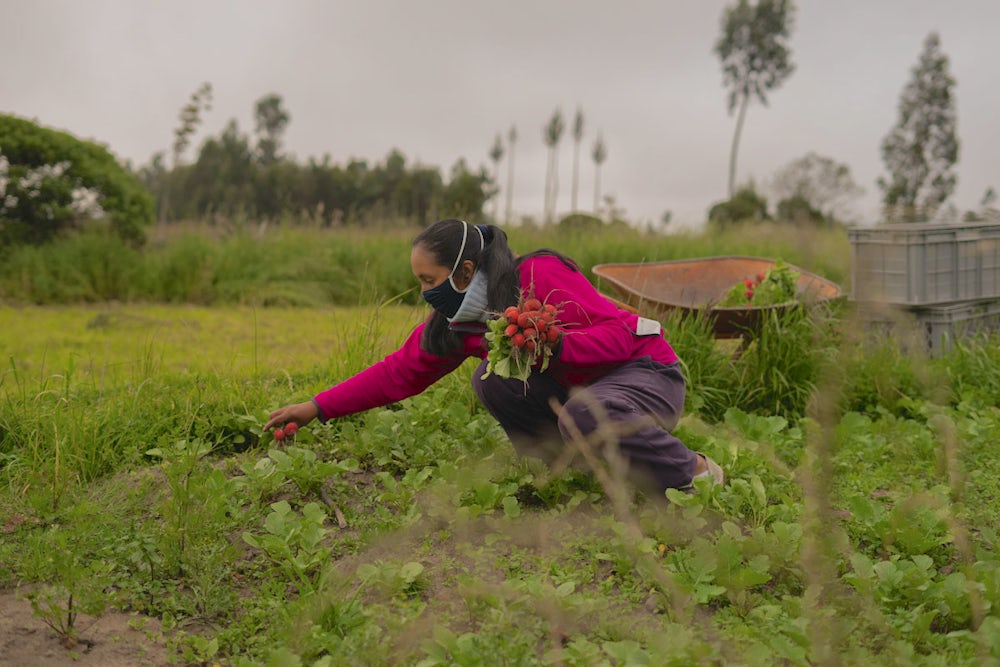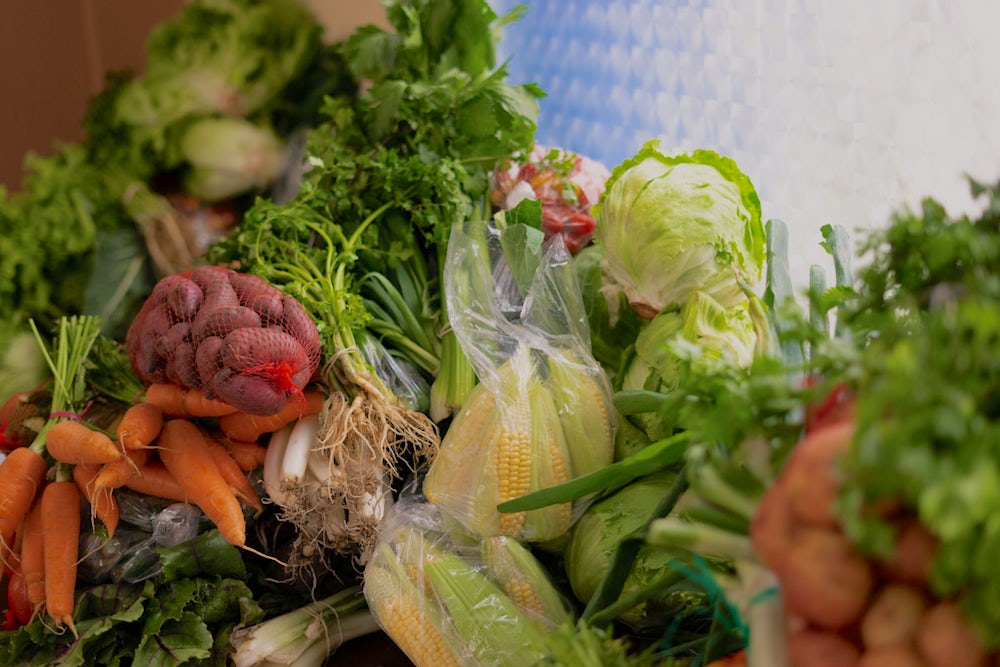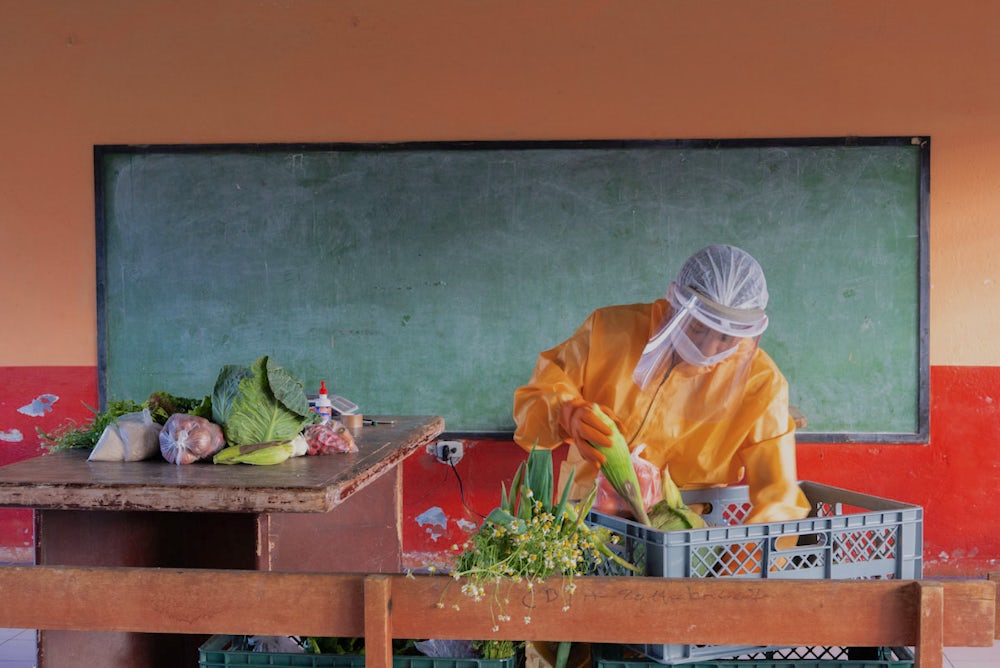Early in the COVID-19 pandemic, panic and fear took over the streets. And it wasn’t unwarranted. Our Heifer Ecuador team has personally spoken to families who have lost five or six members to the disease, a tragedy at nearly the same scale as a natural disaster.
Ecuador’s Social Observatory reported over 31,600 direct deaths — and 73,500 excess deaths, the difference between observed and expected passings in the same period — as of June 2021, and the Financial Times ranked Ecuador among the countries with the highest COVID-19 death rate. We continue to have one of the world’s lowest PCR testing rates.
But the pandemic is not the only crisis in Ecuador.

This emergency intersects with other countrywide stressors, such as deepening poverty, marginalization, unemployment, malnutrition and migration under precarious conditions — some driven, in part, by stay-at-home orders that revealed and increased other vulnerabilities.
Under these conditions, pre-existing food insecurity and malnutrition have become even more challenging to address. But while smallholder farmers have suffered some of the worst impacts of this crisis, Heifer Ecuador believes they are also our first ally in the crusade to overcome it.
The saying goes: when things go wrong, they can always get worse. This is concerning when we talk about poverty or lack of opportunities.
Since the start of the pandemic, unemployment levels have soared: According to figures from the National Statistics and Census Institute, underemployment and unemployment rose from around 18% and 4% in December 2019 to 23% and 5% in June 2021. More than 500,000 jobs have disappeared as of December 2020.
As inequalities do not come unaccompanied, poverty levels have also increased. Between June 2019 and June 2021, urban poverty rose from roughly 17% to 24% and rural poverty from 44% to 49%. In the same period, extreme poverty figures have climbed to over 8% in urban areas and to 28% in rural zones, the most alarming figure.
A study recently published in Ecuador states the pandemic has exacerbated poverty in Ecuador enough to set the country back 10 years, and the contraction of the gross domestic product may take up to nine years to recover from. And the pandemic is not over yet.
Amid these figures, the paramount question is how children in Ecuador are doing.
Regarding schooling, teachers in the rural sector have called 2020 and 2021 lost years for the country's children and youth. With virtual classes but little access to internet or technology in these communities, kids’ studies simply took a back seat. According to UNICEF, 90,000 Ecuadorian students dropped out of the education system during the pandemic and six out of 10 say they are learning less.
Furthermore, access to educational and care systems previously connected children to food-assistance programs, which had been contributing, in part, to their nutrition. All this support has been lost.

Ecuador has Latin America’s second-highest percentage of chronic malnutrition in children under five. One in four children in Ecuador is malnourished and in the Indigenous population the figures are even higher, with as many as 62% of children undernourished in subdivisions like Guano, where there is a large Indigenous population.
These children have poorly balanced diets containing almost no fruits, vegetables, meat, fish, dairy or eggs, resulting in inadequate consumption of vitamins and protein. The paradox is these children are sons and daughters of farmers.
While the first three weeks of lockdown fueled an increase in sales, the economy’s contraction has since lowered demand and now, sales are three times lower than before the pandemic. Farmers supported by Heifer Ecuador report they currently earn 20 cents for a liter of milk, while the official price is 42 cents. They receive 19 cents for a pound of rice that will be sold in the city for 50 cents. And for a papaya, they receive 10 cents, while in the city it is sold at $2. The list goes on.
In short, smallholder family farming subsidizes the food consumed every day in this country, and the consequences are painful.
According to UNICEF, there have been 12 assistance programs in Ecuador since 1993 that have failed to change the rate of child malnutrition, which even increased between 2014 and 2018. This is excluding the consequences of the COVID-19 pandemic that have yet to be measured.

The national government has proposed for Ecuador to “grow without undernutrition,” a strategy seeking to lower chronic child malnutrition rates. But if this program does not consider smallholder family farming as food providers, it will only be one more assistance program. The problems of poverty and poor access to food cannot be solved without including farmers and their children.
Heifer Ecuador believes the best food supply is closest to home and, in our effort to alleviate hunger and poverty, we have partnered with the Undersecretariat of Smallholder Family Agriculture — an entity attached to Ecuador’s Ministry of Agriculture — to develop a model of purchasing smallholder produce to create baskets of fresh, healthy food for distribution to families in vulnerable situations.
So far, Heifer Ecuador and the Undersecretariat have delivered 790 nutritious baskets to communities in the provinces of Guayas and El Oro, with diverse food items sourced from local producer associations. Honey is provided by six mangrove associations. Vegetables, fruits and animal protein come from two associations in Azuay. Dairy products are purchased from two associations in El Oro.

Nearly 4,000 kits are expected to be delivered by December in provinces including Azuay, Manabí, Esmeraldas, Santa Elena, Cotopaxi and Pichincha, with more than 30 farmer organizations producing the food.
This scheme generates farm-family income and provides quality food for families in need, proving smallholder family farming can be the first ally in the fight against malnutrition. No successful food program to address this public health issue — amid so many other connected crises — can leave the farmers out.
